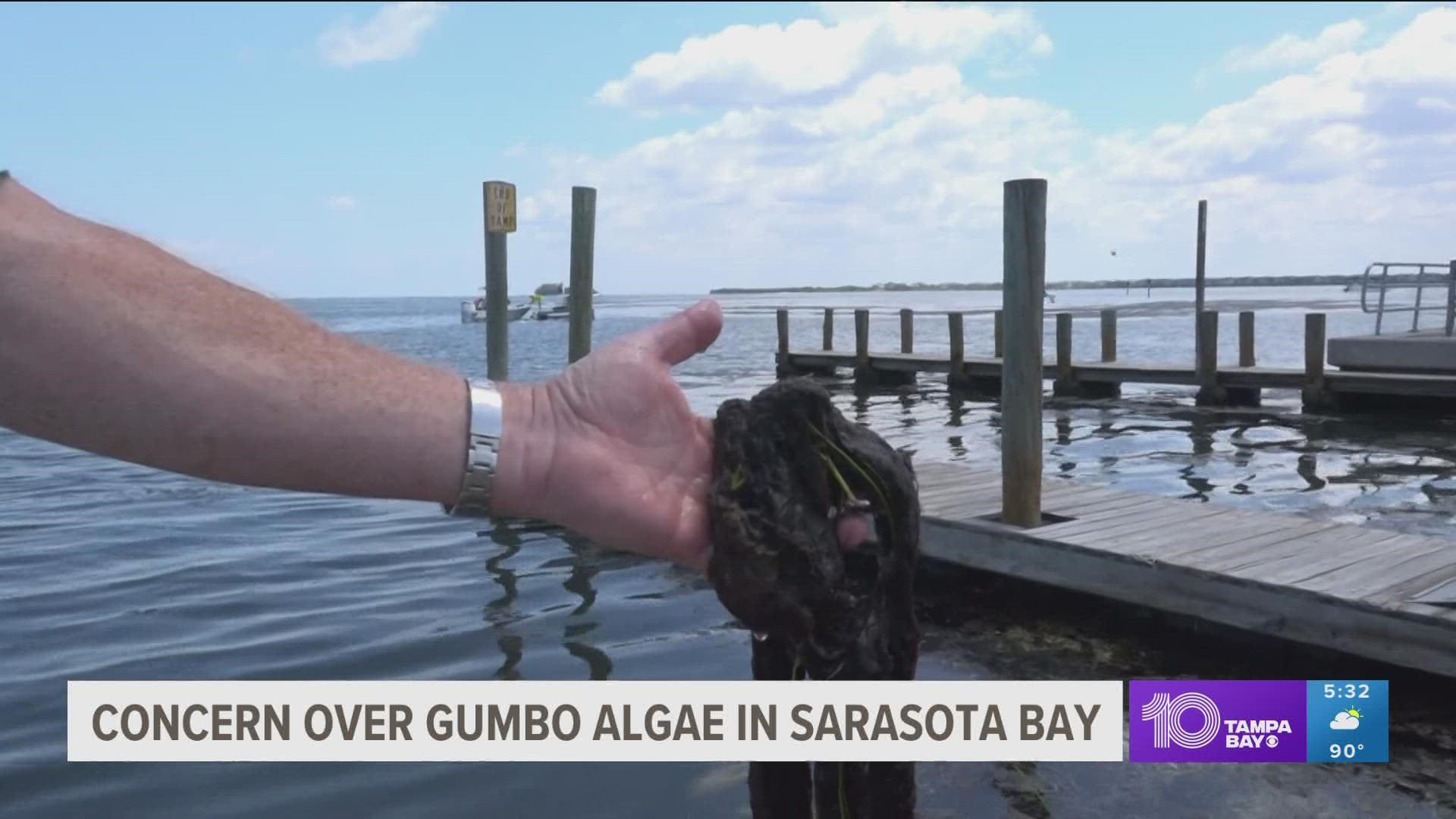ANNA MARIA, Fla — Clumps of thick greenish-brown algae have formed a vast film over Sarasota Bay's waters.
It's a type of algae known as Lyngbya or "gumbo algae" and it has also taken over the shoreline. Local environmentalists are worried the floating material reveals it's a much deeper problem underneath the water, beyond what the eyes can see.
Experts and volunteers with the Sarasota Bay Estuary Program received reports of the presence of a very substantial amount of macroalgae on the bottom of the bay and visited 10 sites in upper Sarasota Bay to investigate.
Divers found a concerning amount of the algae and believe there are several thousand acres of it growing inside the bay. Some dead and decaying algae have floated up to the surface and have now covered some of the shorelines.
This has now raised concerns about the potential physical damage the algae has caused to seagrass meadows in the Bay.
They say it is blocking much-needed sunlight that helps the grass meadows which are a source of food for manatees to grow and thrive underwater.
"Imagine that you're trying to photosynthesize but you are covered with this stuff, you don't get sunlight, you are going to die if it lasts long enough," Director of Sarasota Bay Estuary Program Dave Tomasko said.
"Think of it like an Oak tree covered with Spanish Moss," added. "That's not a really good kind of thing. You're always going to have Spanish Moss growing on Oak trees, but if you have too much it can actually be a problem for the Oaktree. Well, if you have too much of this stuff, it could be a problem for the grass beds."
Tomaski recently put out a report on the findings of his team of trained marine biology investigators.
The decaying algae floating ashore with dead seagrass has also begun posing a challenge for marine and boating activity.
"It affects us and really from the start of our day, when we put the boat in, we have to watch out for the grass clogging the intakes on the motor so it doesn't overheat," charter boat operator Blake Chitwood said.
If that happens, Chitwood said it could set boat operators, like himself, back at least $20,000 to get a motor replaced.
"Then when we go to catch our bait, pretty much every time we throw the net if you're in a certain spot, it's taking in 10 to 20 pounds of the grass," Chitwood said.

